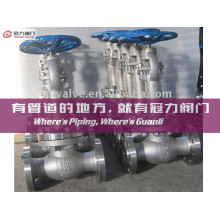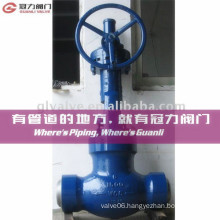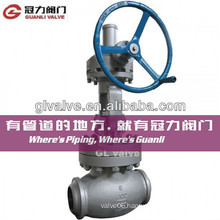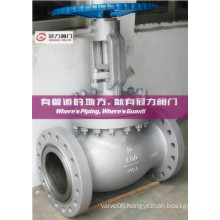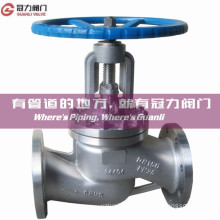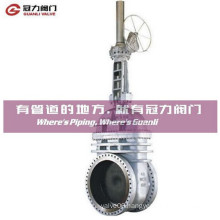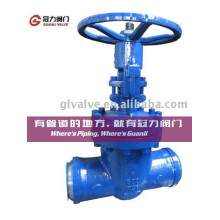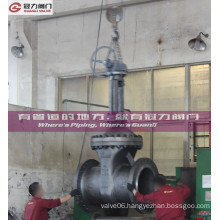Membrane separation or pressure swing adsorption? Comparison of the principle of nitrogen generator
2021-05-02
Chris Harvey, General Manager - BYK Gas Instrument Trading (Shanghai) Co., Ltd.
As we all know, BYK has the widest range of nitrogen generators on the market today, and we are constantly developing new products to meet the ever-changing needs of nitrogen to supply new applications. We not only have the most abundant nitrogen generators on the market to meet the gas demand of LC/MS, but also we give gas chromatograph, total organic carbon analyzer, Fourier infrared spectrometer, sample evaporator, fume hood The glove generator box, inductively coupled plasma spectrometer, nuclear magnetic resonance instrument, evaporative light scattering detector and Other laboratory equipment gas generators are also very comprehensive and extensive - in fact, almost all of your lab needs The gas equipment allows our gas generators to supply gas. Why do our gas generators cover most of the applications in your lab? Because, for the past 20 years, we have focused on the development and production of gas generators in the laboratory, and we are dedicated to providing you with a stable and reliable laboratory gas source.
Another well-known fact is that the gas separation technology we use is mature and reliable. On our nitrogen generators, we use membrane separation technology and pressure swing adsorption technology to produce nitrogen. If our customers prefer a certain technology, we can recommend the right model according to customers' preferences. However, for some specific applications, using one of the separation techniques is more advantageous than the other.
Membrane Separation Technology
Allows compressed air to pass through the hollow fiber membrane. When air passes through the membrane, oxygen, carbon dioxide, carbon monoxide and water vapor in the air pass through small holes in the hollow fiber membrane tube and are discharged to the atmosphere. At the exit of the membrane, large volumes of nitrogen molecules and inert gas argon are collected and delivered to the application equipment. This nitrogen separation and extraction technology is simple and effective, without any moving parts. The highest purity of the separated and extracted nitrogen can reach 99.5% without any impurities.
The pressure swing adsorption technology separates a single component in a gas mixture by a solid medium, and separates nitrogen in the air by a pressure swing adsorption technique. The required solid medium is a carbon molecular sieve, and the carbon molecular sieve selectively adsorbs oxygen in the air. Thereby, nitrogen and oxygen in the air are separated under pressure.

The carbon molecular sieve is actually a porous loose rod-shaped carbon particle. When the nitrogen purification sealing column filled with carbon molecular sieve particles is filled with compressed air (the main components are nitrogen, oxygen and inert gas argon and a small amount of water vapor), the carbon molecular sieve will Adsorbs moisture, oxygen, but nitrogen is not adsorbed. This is mainly because the molecular sizes of nitrogen and oxygen are different. The pores on the carbon molecular sieve particles allow oxygen with a small molecular size to enter, but nitrogen cannot enter because the molecular size of nitrogen is larger than oxygen; thus, nitrogen and oxygen are separated. opened.
The process of pressure swing adsorption consists of two steps and stages:
1. In the adsorption stage, oxygen, water vapor and carbon dioxide in the compressed air are adsorbed by the carbon molecular sieve column, and the nitrogen is collected and stored.
2. In the regenerative stage, the pressure of the carbon molecular sieve column is released into the atmosphere, and the carbon molecular sieve particles adsorbing oxygen, carbon dioxide and water vapor release the adsorbed oxygen, carbon dioxide and water vapor, thereby preparing for the next adsorption.
The process of pressure swing adsorption requires maintaining a stable temperature, which is usually close to the ambient temperature of the laboratory (20-25 ° C). The nitrogen produced by the pressure swing adsorption technology can achieve a purity of up to 99.999%. The higher the purity, the more air is consumed in the production process.
Pressure swing adsorption technology and membrane separation technology to produce nitrogen have their own advantages and disadvantages. Which method is used to produce nitrogen depends on the application and flow rate requirements. In the market, some people say that nitrogen membranes and carbon molecular sieves are consumables and need to be replaced regularly, which is not right. If the user's degreasing and dewatering filters are not effective, the separation effect of the carbon molecular sieve and the nitrogen membrane will gradually fail as the service life increases.
LC/MS applications
For LC/MS instruments, nitrogen purity above 95% is required for most mass spectrometers, even for some very high-end and sensitive mass spectrometers. The key is that the gas can not contain any dust, water vapor and hydrocarbons and oil droplets. Therefore, high-performance filtration system is especially important. The dust removal specification of the filtration system should be less than 0.01 micron. At the same time, the oil droplets and water vapor must also be removed. Since the filtration system is saturated once, the filtration adsorption effect is greatly reduced, so it is necessary to maintain the filter every year.
For LC/MS, we use membrane separation technology and pressure swing adsorption technology to produce nitrogen products. However, for some small and medium-sized laboratories, there are some nitrogen generators for membrane separation. Very obvious advantage
Maintenance and service
Membrane separation technology involves very few moving parts. Normally, the nitrogen membrane inside a nitrogen generator weighs 3 kg (and the pressure swing adsorption module weighs 100 kg), which makes Maintenance has become very simple. At present, the service team of BYK China can guarantee a 97% first repair rate within 48 hours. Once the generator has a problem, the small and light nitrogen membrane takes up little space, making generator maintenance and replacement of parts easy, as well as reducing maintenance and repair costs and saving time. The operation of the nitrogen membrane does not require the management and control of many electronic components. Then we can use more electronic components to monitor the core technical parameters, and at the same time, let our engineers find the crux faster when repairing.
Size and weight
Due to the small size and light weight of the nitrogen membrane, this means that we can design a gas generator that is lighter, smaller and more compact. At the same time, the generator can be placed under the standard test bench, and the bottom of the generator is designed. Easy to move. These gas generators are undoubtedly the perfect choice for laboratories with limited space.
The noise level membrane separation technology does not produce any noise. The pressure swing adsorption technology generates a large deflation sound when the carbon molecular sieve column is released and vented, which means that the membrane separation nitrogen generator can be placed in the application. Next to the instrument, work quietly. There is no need to place the generator in another room, which increases the extra cost of Pipe extension.
The pressure swing adsorption technology is very obvious for large laboratories. In our iFlow products, we apply pressure swing adsorption technology, which can:
Producing higher flow rates of nitrogen In some large laboratories with 20-30 mass spectrometers, we have installed some generators that use pressure swing adsorption technology to produce nitrogen. A nitrogen generator is enough to supply gas to the entire laboratory.
Minimize costs Because the nitrogen flow rate of a nitrogen generator is sufficient to supply gas to all applications in the laboratory, this centralized gas supply solution is certainly more than a single small flow gas generator for a single application. The price/performance ratio of gas is much higher.
Gas chromatographs use nitrogen produced by pressure swing adsorption technology, which is ideal for supplying gas to gas chromatographs. Carrier gas to the gas chromatograph requires not only a particularly high purity of nitrogen, but also a particularly low hydrocarbon content in nitrogen. The use of carbon molecular sieve pressure swing adsorption technology to produce nitrogen is the only option. Before the air enters the carbon molecular sieve, the air is filtered, and then all the trace hydrocarbons are catalytically oxidized and removed by a catalytic cracking furnace. The nitrogen produced is of exceptionally high purity and can be used as a carrier gas for all gas chromatographs, including the carrier gas required for electron capture detectors. This is not a typical case of pressure swing adsorption technology. The carbon molecular sieve pressure swing adsorption technology we use can minimize the number of moving parts. At the same time, the pressure swing adsorption column has no noise during operation, in the event of generator failure. Maintenance is also very convenient.
BYK has sold more than 50,000 gas generators worldwide and 4,000 in the laboratory. All of our gas generators are inspected and certified by renowned mass spectrometers and gas chromatograph manufacturers, and OEM suppliers can sell our gas generators. Based on our focus on gas generators and our extensive experience, we have developed many excellent products such as NM32LA, NM3G, AB3G, Precision series hydrogen generators, zero-grade air and nitrogen generators, and IFlow series.
If you would like to know the gas generator and laboratory centralized gas supply that match your application, please contact us.
Gamma lab nitrogen generator is suitable for lab use, it makes use of pressure swing adsorption technology, separating and collecting nitrogen from air. It is easy to operate, plug and play, one simple push on starting button, nitrogen generator begin to work.

Laboratory nitrogen generator is one kind of cabinet nitrogen generator. Its size is within 850 x 920 x 1100 mm, weight within 155 kg. Its details are as below:
2 Detailed technical specification
2.1 Compressed air consumption
The generator consumes a maximum of 115 slpm of compressed air to generate the required N2 flow. Air source is not included in this product.
2.2. Air supply pressure
Minimum air supply pressure shall be externally regulated to 600 kPa.
2.3. Air quality
This Generator is provided with one full set of FESTO filters, the air supplied to the Generator still need to be dry and oil-free.
2.4. N2 output
2.4.1. Quantity of N2 generate: the generator is capable of deliver 25 slpm nitrogen.
2.4.2. Delivery pressure: the generator delivers N2 at a pressure greater than 450 kPa.
2.4.3. O2 contamination level: O2 level in the N2 stream is not exceed 0.5%, and does not vary from peak to trough by more than 5% of the absolute concentration.
2.5 Dimensions
With package, the Generator size: 850 mm (Length)x 920 mm (width)x 1100 mm(height).
2.6 Weight
With package, the Generator weight is not more than 155 kg.
2.7 Wheels
The Generator is fitted with 2 fixed wheels at the rear and 2 swivel wheels with brakes at the front
2.8 Connection to power supply
The Generator has a panel mounted connector on the rear panel
• Current capacity at maximum temperature 2.5A<Imax<3.5A ( the power supply is capable of supplying 2.5A nominal)
• Jack plug, 5.5 x 2.5 x 9.5 mm, positive on the centre pin
• Maximum operating voltage at maximum temperature 30VDC.
• Minimum number of insertions/extractions while maintaining contact resistance specification AND without mechanical failure: > 5000
• Maximum contact resistance after specified minimum insertions: 30milliohms maximum
• Insulation resistance: min 100MegaOhms after environmental and durability tests
• Dielectric withstand Voltage : Min 500V for 60s
• Operating temperature range: -20 deg C to +70 deg C
2.9 Indicator
The Generator has a pushbutton illuminated switch on the front panel
• Button to be flush mounting or recessed into a bezel to avoid damage
• High corrosion resistance, either plastic or stainless steel body
• No symbol on button
• Size of button and bezel to be ~ 22mm to 30mm
• Mechanical Endurance : > 1000000 activations without mechanical failure
• Electrical Endurance : > 100000 cycles at maximum current and maintaining maximum specified contact resistance• Action mechanism : push on – push off
• Current handling capability : 4A DC min break, 4A DC min Make, inductive load (double the maximum expected current demand to give good lifetime)
• Maximum DC Working voltage : at least 40V DC
• Illumination type and color : LED, green
• Illumination Operating voltage: 24VDC
• Operating Temperature Range: -20deg C to +70 degC
• Terminal type : either screw terminal or 6.5mm spade type terminals
2.10. Solenoids
The solenoids on the gas control valves is 24 VDC.
2.11. Operation
2.11.1. Operating cycle
A typical operating cycle for the Generator is 1 start per day and then run for 8 hours per day, which is equivalent to 2000 hours of operation per year. Depending upon the particular site, operating time could be anywhere between 0 and 24 hours per day.
2.11.2. Operation at shutdown
When the power is turned off, the pressure vessels is maintained in the pressurized state by closing the two exhaust valves.
2.12. Start up
2.12.1. Start up time
Start up times means the time from start up to producing qualified nitrogen.
The time to complete start up is less than 15 minutes.
2.13. Gas connections
The two external gas connections on the Generator, Air In and N2 Out, are constructed from brass and are to suit ¼" (6.35 mm) OD tubing. There are labeling in English next to these connections, [Air In" and [N2 Out", as part of the rating label.
2.14. Environmental requirements
2.14.1. Operating temperatures
The Generator is normally operated within performance specification over the temperature range:
10ºC - 35ºC from 0 – 3000 m, and 10ºC - 25ºC from 3000 – 4500 m
The Generator can operate safely over the temperature range:
5ºC - 35ºC from 0 – 3000 m, and 5ºC - 25ºC from 3000 – 4500 m
2.14.2. Noise level requirements
Noise level from the Generator is less than 72dBa at 1m distance. This is achieved by fitting silencers on the exhaust vents.
2.15. Life Requirements
The Generator can operate with a mean time between failure of 5 years minimum.
Lab Use Nitrogen Generator, Laboratory Nitrogen Generator, Laboratory Nitrogen Gas Generator, Laboratory Use High Purity Nitrogen Generator
Wofly Technology Co., Ltd. http://www.gammagases.com
